Senior Quality Executive
50+ Senior Quality Executive Interview Questions and Answers

Asked in Apollo Medskills

Q. Your qualification is in a different area than your work experience. Why?
My education provided me with a strong foundation in quality management principles, which I have applied in my work experience.
My education in quality management principles has given me a strong foundation for this role
I have applied these principles in my previous work experience
My diverse background allows me to bring a unique perspective to the role
I am confident that my skills and experience make me a strong candidate for this position

Asked in CG Power and Industrial Solutions

Q. What is the process to identify an issue and how do you resolve it?
The process to identify and resolve issues involves root cause analysis, corrective actions, and preventive measures.
Conduct a root cause analysis to determine the underlying issue
Implement corrective actions to address the identified problem
Develop preventive measures to avoid similar issues in the future
Monitor the effectiveness of the solutions implemented
Senior Quality Executive Interview Questions and Answers for Freshers

Asked in Axio Biosolutions

Q. What is Experince ? What is Bet ,? Total pharma experince )? Validation product Salary acceptation ? Last experince? Things that learnt ?
Experience refers to the knowledge, skills, and understanding gained through practical involvement in a particular field or activity.
Experience is acquired through hands-on involvement in a specific field or activity.
It includes knowledge, skills, and understanding gained over time.
Experience can be gained through work, education, training, or personal involvement.
It helps individuals develop expertise and proficiency in their chosen field.
Experience is valuable for problem-s...read more
Asked in Frontier Biscuit Factory

Q. What do you know about the raw material and FG product testing process?
The raw material and FG product testing process involves thorough analysis to ensure quality standards are met.
Raw material testing involves checking for purity, composition, and potential contaminants.
Finished goods testing includes physical, chemical, and microbiological analysis.
Testing methods may include chromatography, spectroscopy, and microbial testing.
Quality control measures are implemented to ensure compliance with regulations and standards.
Results are documented a...read more

Asked in Apollo Medskills

Q. How do you handle quality control across a large number of centers?
Develop a systematic approach to monitor and evaluate quality across all centres.
Establish clear quality standards and guidelines for all centres.
Develop a comprehensive quality assurance program.
Conduct regular audits and inspections to ensure compliance with standards.
Provide training and support to centre staff to improve quality.
Implement a system for collecting and analyzing data on quality performance.
Use technology to streamline quality monitoring and reporting.
Establi...read more

Asked in CG Power and Industrial Solutions

Q. How would you implement Lean Manufacturing in a production line?
Implementing Lean Manufacturing involves identifying waste, streamlining processes, and continuous improvement.
Identify and eliminate waste in the production process
Streamline processes to improve efficiency and reduce lead times
Implement visual management tools such as Kanban boards to track progress
Encourage employee involvement and empowerment to drive continuous improvement
Utilize tools like 5S to organize the workplace and standardize processes
Senior Quality Executive Jobs



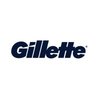
Asked in Gillette

Q. What do you know about Quality Assurance?
Quality assurance is a process that ensures products or services meet specified requirements and standards.
Quality assurance involves planning, implementing, and evaluating activities to ensure quality.
It focuses on preventing defects and errors rather than detecting them after production.
Quality assurance includes activities like quality planning, quality control, and quality improvement.
It involves setting quality standards, conducting audits, and implementing corrective ac...read more

Asked in Criyagen Agri & Biotech

Q. How will you handle customer complaints that you receive?
I prioritize understanding, resolving, and learning from customer complaints to enhance satisfaction and improve processes.
Listen actively to the customer's concerns to fully understand their issue.
Acknowledge the complaint promptly and assure the customer that their feedback is valued.
Investigate the issue thoroughly to identify the root cause, involving relevant teams if necessary.
Provide a clear and timely response to the customer, outlining the steps taken to resolve thei...read more
Share interview questions and help millions of jobseekers 🌟


Asked in Apollo Medskills

Q. What is the DDU-GKY SOP for quality control?
DDU-GKY SOP for quality part is a set of guidelines and procedures to ensure high standards of quality in the program.
DDU-GKY SOP for quality part outlines the steps to be followed to maintain quality in the program
It includes guidelines for monitoring and evaluation of training programs
It defines the criteria for assessing the quality of training providers
It specifies the process for conducting quality audits and inspections
It provides a framework for addressing quality issu...read more
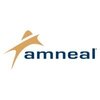
Asked in Amneal Pharmaceuticals

Q. How do you calculate Out of Trends?
Out of trends can be calculated by analyzing data points and identifying deviations from expected trends.
Collect data points over a period of time
Plot the data points on a graph
Identify the expected trend based on historical data
Analyze the data points to identify any deviations from the expected trend
Calculate the percentage of data points that fall outside the expected trend
Investigate the reasons for the deviations and take corrective actions

Asked in Amneal Pharmaceuticals

Q. What is the difference between method validation and method development?
Method validation is confirming that a method is suitable for its intended use, while method development is creating a new method.
Method validation ensures that a method is reliable, accurate, and consistent for its intended use.
Method development involves creating a new method from scratch or modifying an existing one to improve its performance.
Validation is a necessary step before a method can be used for routine testing, while development is done to improve the method's pe...read more

Asked in Criyagen Agri & Biotech

Q. Why is calibration mandatory for testing equipment?
Calibration ensures accuracy and reliability of testing equipment, crucial for quality control and compliance in various industries.
Ensures measurement accuracy: Regular calibration verifies that equipment provides precise readings, essential for quality assurance.
Compliance with standards: Many industries, such as pharmaceuticals, require calibrated equipment to meet regulatory standards.
Prevents costly errors: Inaccurate measurements can lead to product defects, recalls, an...read more
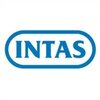
Asked in Intas Pharmaceuticals

Q. What documents were discussed during the meeting?
The documents discussed during the meeting included the quality management plan, audit reports, and corrective action plans.
Quality management plan
Audit reports
Corrective action plans

Asked in Iffco Tokio General Insurance Co.

Q. What do you understand by test plan?
A test plan is a document outlining the approach, resources, schedule, and scope of testing activities.
Test plan defines the testing activities to be conducted, such as test objectives, test strategies, and test deliverables.
It includes details on test environment setup, test cases to be executed, and the criteria for entry and exit from testing.
Test plan also outlines the roles and responsibilities of team members involved in testing.
It serves as a roadmap for the testing pr...read more

Asked in Intas Pharmaceuticals

Q. Hplc principle and it's comparison with other technology
HPLC is a chromatography technique used to separate, identify, and quantify components in a mixture based on their interactions with a stationary phase and a mobile phase.
HPLC stands for High Performance Liquid Chromatography.
It is commonly used in pharmaceutical, environmental, and food industries for quality control and research purposes.
HPLC is more sensitive and provides higher resolution compared to other chromatography techniques like TLC (Thin Layer Chromatography) and...read more

Asked in CG Power and Industrial Solutions

Q. Describe your Lean Six Sigma Black Belt project.
A Lean Six Sigma Black Belt project involves using data-driven methods to improve processes and reduce waste.
Identify a problem or inefficiency in a process
Collect and analyze data to understand the root cause
Implement solutions to improve the process
Measure the impact of the changes to ensure improvement
Certification as a Lean Six Sigma Black Belt is required to lead these projects

Asked in TCS

Q. What is your expected salary package?
The expected package for the Senior Quality Executive position will depend on factors such as experience, qualifications, and industry standards.
The expected package will be competitive and in line with industry standards.
It will be based on the candidate's qualifications, experience, and skills.
Additional benefits such as health insurance, retirement plans, and performance bonuses may also be included.
The package may vary depending on the company's size, location, and financ...read more

Asked in Kazo Fashion

Q. how do INLINE , MID , FINAL INSPECTION
INLINE, MID, and FINAL INSPECTION are three stages of quality control in manufacturing.
INLINE INSPECTION is done during the manufacturing process to ensure that each step is completed correctly.
MID INSPECTION is done after a certain percentage of the manufacturing process is completed to catch any issues early on.
FINAL INSPECTION is done at the end of the manufacturing process to ensure that the final product meets all quality standards.
These inspections help to identify and ...read more

Asked in SRF

Q. Types of compressor and process
Compressors are categorized into positive displacement and dynamic types. Processes include compression, cooling, and transportation.
Types of compressors: positive displacement (reciprocating, rotary screw, rotary vane) and dynamic (centrifugal, axial flow)
Processes: compression (increasing pressure of gas), cooling (removing heat from gas), transportation (moving gas from one location to another)

Asked in Zydus Lifesciences

Q. Preparation of analytical method validation protocol and Report
Analytical method validation ensures reliability and accuracy of testing methods in pharmaceuticals and other industries.
Define the purpose of validation: Ensure the method is suitable for its intended use.
Identify parameters to validate: Accuracy, precision, specificity, linearity, range, robustness.
Develop a validation protocol: Outline the methodology, acceptance criteria, and statistical analysis.
Conduct experiments: Perform tests under controlled conditions to gather dat...read more

Asked in Genpact

Q. What is the P2P cycle?
The p2p cycle refers to the procure-to-pay cycle, which is the process of obtaining and paying for goods and services.
The cycle starts with the need for goods or services, followed by the selection of suppliers and negotiation of terms.
Purchase orders are then created, goods or services are received, and invoices are processed for payment.
The final step involves reconciling invoices with purchase orders and receiving reports to ensure accuracy and completion of the transactio...read more

Asked in Criyagen Agri & Biotech

Q. What is meant by the resonance of benzene?
Resonance in benzene refers to the delocalization of electrons across the ring structure, enhancing stability.
Benzene has a hexagonal structure with alternating single and double bonds.
Resonance structures depict the delocalization of pi electrons, leading to equal bond lengths.
The actual structure of benzene is a hybrid of these resonance forms, known as the resonance hybrid.
This delocalization contributes to benzene's stability and unique chemical properties.
Example: The st...read more

Asked in Axio Biosolutions

Q. What product knowledge do you have?
Product knowledge refers to the understanding and familiarity with the features, functions, and benefits of a particular product or range of products.
Understanding the product's specifications and technical details
Knowing the product's target market and customer needs
Being aware of the product's competitive advantages and unique selling points
Understanding the product's lifecycle and any potential issues or limitations
Being familiar with the product's pricing, packaging, and ...read more

Asked in MOURI Tech

Q. What is conflict management?
Conflict management is the process of handling disputes or disagreements in a constructive way to reach a resolution.
Identifying the source of conflict
Listening to all parties involved
Finding common ground and understanding each other's perspectives
Collaboratively working towards a solution
Implementing strategies to prevent future conflicts

Asked in Axtria

Q. What is your area of interest?
I am passionate about enhancing quality management systems and fostering a culture of continuous improvement in organizations.
Implementing robust quality assurance processes to minimize defects, such as Six Sigma methodologies.
Leading cross-functional teams to drive quality initiatives, exemplified by a successful project that reduced customer complaints by 30%.
Utilizing data analytics to identify trends and areas for improvement, like analyzing defect rates to streamline pro...read more
Asked in OTTO-AGN

Q. How do you control quality?
Quality can be controlled through a systematic approach that involves planning, monitoring, and continuous improvement.
Establish clear quality standards and objectives
Implement quality control measures at every stage of the production process
Regularly monitor and measure quality performance
Identify and address quality issues promptly
Continuously improve quality through feedback and analysis
Train and educate employees on quality control and improvement
Use technology and automa...read more

Asked in Flipkart

Q. Work ability in fixed work time
Work ability in fixed work time refers to the ability of an individual to effectively perform their job responsibilities within a set schedule.
Efficient time management skills are essential for maximizing work ability in fixed work time.
Setting clear priorities and deadlines can help improve work ability within a fixed schedule.
Regular breaks and proper rest are important for maintaining work ability throughout the work day.
Utilizing tools and technology to streamline tasks c...read more

Asked in CG Power and Industrial Solutions

Q. Describe a Lean Six Sigma project you worked on.
A Lean Six Sigma project is a process improvement initiative that aims to reduce waste and improve efficiency by using data-driven methodologies.
Identify the problem or opportunity for improvement
Define the project scope and goals
Measure current process performance using data
Analyze the data to identify root causes of issues
Implement solutions to address the root causes
Control and monitor the improved process to sustain the gains
Examples: reducing defects in manufacturing, st...read more


Q. How do you manage your work?
Managing work involves setting priorities, delegating tasks, staying organized, and communicating effectively.
Set clear goals and priorities
Create a schedule and stick to it
Delegate tasks to team members based on their strengths
Use tools like project management software to stay organized
Communicate regularly with team members to ensure everyone is on the same page

Asked in Weblink In

Q. How did you hear about Weblink?
Weblink is a hyperlink or URL that directs to a webpage or website.
A weblink is a clickable link that takes you to a webpage or website.
Weblinks can be found in emails, documents, social media posts, and websites.
Weblinks can be shortened using services like bit.ly or TinyURL.
Weblinks can be used for various purposes such as sharing information, promoting products, or directing traffic to a website.
Interview Questions of Similar Designations
Interview Experiences of Popular Companies


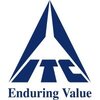
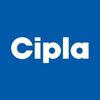




Reviews
Interviews
Salaries
Users

















